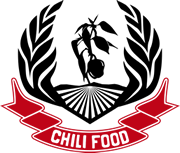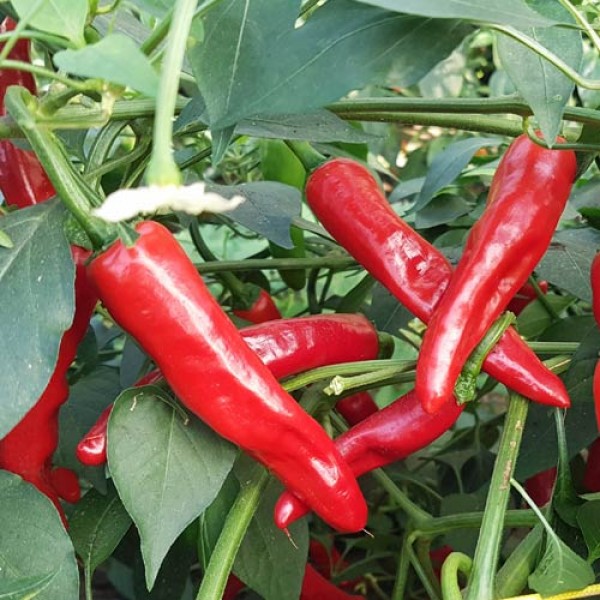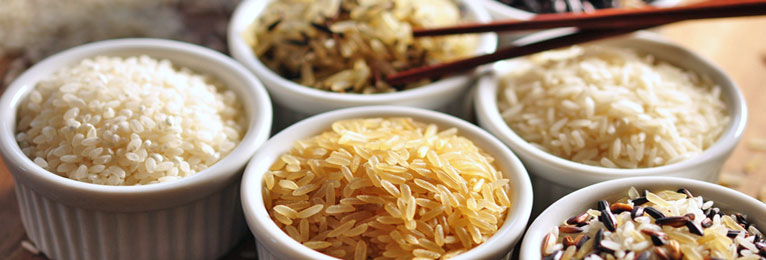Piment d`Espelette
Piment d`Espelette: The pearl of the Basque Country
Piment d`Espelette is more than just a spice, it characterises the entire region of the French Basque Country and is a cultural heritage. This chilli variety is appreciated by amateur and gourmet chefs all over the world.
General information: Piment d`Espelette belongs to the Capsicum annuum chilli species and is a special and very aromatic red pointed pepper that originated in the French Basque Country in south-west France at the foot of the Pyrenees.
The designation Piment d`Espelette has been protected by the EU AOC (Appellation d`Origine Controlée) since 1 June 2000 and AOP (Appellation d`Origine Protégée) since 2012. This means that the products can only be labelled Piment d`Espelette AOC/AOP if the plants were grown and processed in this small region around the town of Espelette. Otherwise, it is better to call it Gorria, which is the original botanical variety name.
Origin: The variety has a long history and is closely linked to Basque culture; its Basque name is Ezpeletako Biperra. Originally, the chillies were probably brought back from Mexico by a Basque sailor who was travelling with Christopher Columbus. The local climate and the permeable, slightly acidic soil were particularly suitable for cultivation. The local farmers and chefs discovered that the Espelette chilli powder was ideal for preserving meat, especially ham and sausage, but also pâtés and fish. To this day, ham rubbed with Espelette chilli powder is a typical speciality of the region.
Growth habit and pods: Piment d`Espelette plants grow to a height of approx. 90 cm and are characterised by their compact growth habit with a strong stem that branches out bushily at a height of approx. 30 cm. The white flowers produce elongated pods that are approx. 7 to 14 cm long and approx. 3 cm wide. They have the shape of a pointed pepper, are thin-walled and develop a moderate heat (4/10). They ripen from green to a bright orange-red colour. They are harvested in late summer and autumn when the peppers are fully ripe.
Cultivation notes: The temperate Atlantic microclimate and the special terroir of the region around Espelette characterise the special flavour of the pepper variety. The seedlings are traditionally grown in the region from 14 February in large troughs in greenhouses. Piment d`Espelette can also be grown quite well in our region. It is important to maintain the optimum germination temperature of 20-26°C, which is best achieved indoors in a mini-greenhouse. After pricking out/separating, the seedlings should be grown indoors in 6-8 cm pots. Choose a nutrient-rich vegetable soil as substrate. The plants must not be moved outdoors until the last frosts have occurred. The soil should be prepared with organic fertiliser (e.g. horn shavings or plant pellets) and compost. Like all chillies, Piment d`Espelette likes well-drained soil that does not cause waterlogging. The sunniest spot in the garden or on the patio should be chosen with as many hours of sunshine as possible. The first flowers appear from mid-June and the harvest usually starts in August.
Flavour & use: Piment d`Espelette is characterised by an aromatic sweet and fruity flavour with a slightly smoky note, accompanied by a pleasant, moderate heat. It is milder than many other chilli varieties, but has this typically aromatic and delicious flavour. After harvesting, the chillies are pre-sorted: the pods, which are perfect in colour and shape, are threaded by hand onto strings, the so-called "cordes" or "tresse de piments". These hanging, bright red chilli strings are a typical sight in the towns of the region. When dried in the open air for around 20 days, the pods develop the delicious flavour typical of piment d`Espelette. Most of the rest of the chillies are dried and processed into powder. However, there are also culinary highlights, such as a spicy jam, puree, flavoured mustard, hot sauces or pickled whole. The juice of the peppers is used to make an unusual and flavoursome jelly.
Culinary: Piment d`Espelette adds a subtle warmth to many dishes without overpowering them. It is popular in sauces, stews, marinades and even in chocolate. In Basque gastronomy, piment d`Espelette is an indispensable spice. It adds a distinctive flavour to traditional dishes such as Basque fish soup, Poulet basquaise (Basque chicken), Axoa d`Espelette (Basque meat stew) or Piperade (spicy omelette with tomatoes, peppers, onions and garlic). It is also appreciated in modern cuisine all over the world and is used in various international recipes.
| Type | Capsicum annuum |
| Heat level | 4 |
| Scoville | 1,500 - 2,500 SHU |
| Optimum germination temperature | 20 - 26°C |
| Sowing | February - April |
| Flowers | white (June - Aug.) |
| Growth habit | bushy, approx. 90 cm tall |
| Ripening | from green to red |
| Fruit appearance | elongated, pointed tip, approx. 7 - 14 cm long |
| Ripening time | 80 days |
| Origin | France |
Manufacturer
Name: | Chili-Food-Wissen |
Address: |













